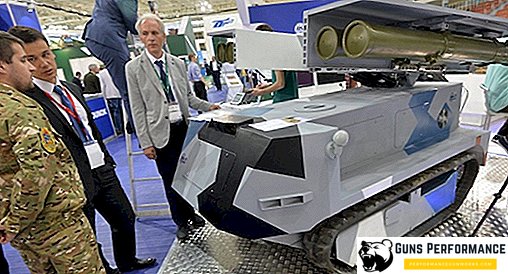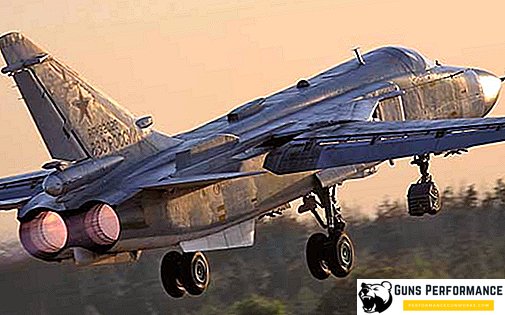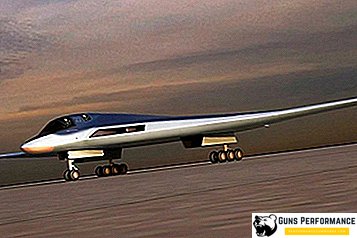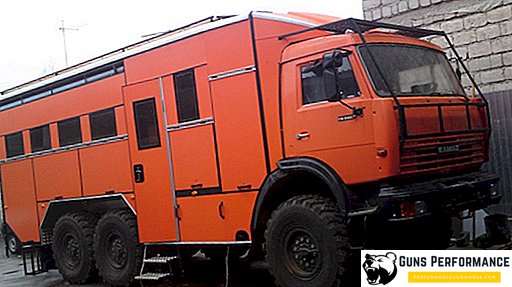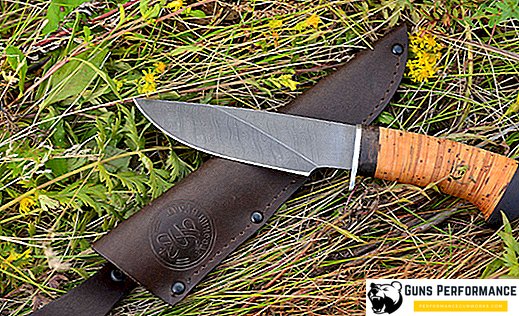
Hunting knives are not just weapons for finishing the beast. A good knife easily divides the prey, takes off the skin, will help with the arrangement of the camp, and at the same time will "keep" shaving razor. There are special skinning, multi-purpose and cutting knives. What are the qualities of the best hunting knives? For this you need to delve into the history of hunting knives.
First hunting knives
The first hunting knives appeared in the Stone Age. Unlike daggers, which were made of horns and were not suitable for cutting prey, the most ancient hunting knives were made of flint and had a sharp cutting edge. Over the centuries, hunting tools have evolved in parallel with military weapons, while their main difference has always been multi-functionality. Knives used for cutting and sanding prey, for cooking. If necessary, the knife became a deadly weapon in capable hands.
Over time, hunting knives began to differ from household ones. They began to decorate, exquisite hunting weapons were given to leaders and rulers as a sign of respect and reverence.
Hunting knives with a fixed blade

The best hunting knives are fixed-blade knives. The choice of this design is not accidental, the hunter's knife should be ready to work in any circumstances. Folding knives lack such a function. Besides the fact that the folding knife must be opened, it can easily fold and injure your fingers upon impact. Due to the small size of the blade folding knives are not suitable for protection against the beast. In our time, all-metal hunting knives with overlays on the handle. This design is very reliable, and it is almost impossible to break it. However, hunters prefer the classic model with vsadnym or through installation of the blade. A good hunter will choose a more reliable through-blade mounting.
Folding hunting knife

Folding models of hunting knives were widespread in the USSR. Almost every hunter had a model equipped with an extractor for sleeves. Such a product was completely unsuitable for cutting, since the steel of the blade was of terrible quality. Gradually, these knives moved to the sons of hunters, and the fathers returned to the use of traditional fiction.
The market offers an excellent folding hunting knife Wenger, presented by the model New Ranger Hunter. This model is equipped with an opener, a corkscrew, a saw and an awl. Wenger hunting knife blade is made of high quality stainless steel. This knife is useful for cooking and for small jobs in the camp.
Hunting knife blade shapes
Blades of hunting knives have a different shape, but most often there are:
- Blades of the classical type. The most common type of blade once. Over the centuries, all knives, from north to east, had this form (in the east, however, it was quickly replaced by a curved shape);
- Blades upswept point (battered blade). Such blades are found on shkuternyh hunting knives, it cuts well, but it is completely unsuitable for delivering piercing blows;
- Spear point blades. Perfectly suited for stabbing, but inconvenient to cut them.
- Blades teardrop-shaped drop point. One of the most convenient and versatile forms of the blade;
- Slip point. This form is intermediate between the third and second option;
- Favorite by most hunters form "Shchuchka". She's "Bowie." Despite the formidable look, such a knife is only suitable for finishing big game and intimidating bullies.
For hunting, the best choice would be a knife with a classic-type blade or drop point. They are able to perform most of the tasks on the hunt.
National knives for hunting
Every nation had national hunting knives. Some models are still popular and are used by hunters all over the world:
- Finnish knives puukko. This is a small knife, suitable for cutting and chores. Differs in the absence of guard and barrel-shaped handle made of birch. Not recommended for beginners due to a traumatic handle;
- Large Finnish knives leuku. This knife is used as a cleaver. They can chop brushwood and poles for the hut. If necessary, turns into a formidable weapon;
- The Yakut knife is the most unusual knife, leading its lineage from the Stone Age. The form looks like half a big bone. It was probably made of bone in the stone age;
- Scandinavian knives. Different from the Finnish knives in the shape of the handle.
There are many more varieties of national knives, but they are not so common.
Metal for hunting knives
Steel for hunting knives is used different. Starting from brand 45x13 to expensive powder and damask. There are two positions when choosing steel for the blade of a knife. She should keep sharpening and at the same time easily correct herself:
- Steel 45x13 is not recommended for a hunting knife, it is too soft, although it does not rust;
- 65x13 is often used for low-cost blades. Sharpness is usually enough for one trip to the hunt, and then requires sharpening;
- 95x18 put on blades of knives of an average price category. With a good heat treatment, such a blade will cut two or three exits without straightening;
- Tool steels allow you to achieve excellent cutting properties. Unfortunately, corrosive and require care;
- Damascus hunting knives show excellent results;
- Damask knives cut even better than Damascus. Only in both variants the properties depend on the composition of the package of steel used in the process of boilat and forging Damascus;
- Powder steels (the modern equivalent of Bulat) have better characteristics. Unfortunately, they are very expensive.
Hunting Knife Handles
Traditionally for the handles of hunting knives are used natural materials. Wood, leather, horn, brass, copper. Handmade knives are made with handles of exotic wood (zebrano, amaranth, paduk, etc.) using titanium plates. Natural materials are great in the hand, and leather leather handle does not freeze your hands in winter.
Hunting knife with his own hands

If you are interested in how to make a hunting knife with your own hands, first you need to decide on its shape and download the knife drawing you like. The drawing must be carefully studied and cut the blade from the workpiece. You can try to forge it, but you will hardly like the first experience of forging. Cutting the blade, you need to carve descents. Make the desired geometry descents help drawing.
You can purchase a ready-made blade and simply “dress” it. A hole is drilled in the handle where the blade shank is inserted. Do not forget the bolster. Without it, the blade quickly becomes loose in the handle. The handles are given a shape that is comfortable for your hand, after which it must be soaked with Danish Oil. After the oil dries, the knife handle can be polished with carnauba or beeswax. Now you know how to make a hunting knife.
Sharpening hunting knives
Unfortunately, not everyone can sharpen blades correctly. To sharpen the quality steel of a hunting knife, it may take about an hour of time and a set of water stones of different grain sizes. To properly sharpen the knife, you must strictly maintain the angle of sharpening. Sharpening should begin with a coarse-grained grinding stones, gradually moving to a smaller grain.
If you want to achieve razor sharpness of the blade, so that it shaves the hair on the arm, you need to polish the edge. To do this, a piece of leather is attached to the wooden bar, mezdroy outside. The skin must be rubbed with GOI paste and sand the blade on this device.
If such a sharpening process seems very difficult to you, you can purchase a knife sharpener. Just do not buy a cheap kitchen or electric sharpener. Until the razor sharpness, only the Lansky or Apex Pro system can sharpen a knife. If you feel sorry for the money, you can buy a Chinese clone several times cheaper. Using such a system is easy. The knife is clamped into a special device that maintains the desired angle of sharpening the blade, and a set of bars of different grain sizes will help you perfectly sharpen your hunting knife.
One of the best models of a hunting knife is the Roselli Hunting.

This is one of the most popular models of knives of the Finnish company, founded by the blacksmith Heimo Roselli in 1974. The model is positioned as a knife for harsh conditions. The knife costs about 7,000 rubles and is perfect for hunting. You shouldn't go to a bear with him, but he is quite capable of solving the remaining tasks.
If you want to buy an inexpensive Swedish classic knife, the classic series from Mora is the best to find. These knives cost from 900 to 2000 rubles. For such a modest amount you get high-quality carbon steel and birch grip. The cut quality is unbelievable for such money. Its only drawback is injury.

Hunting knives there are a great many. Novice hunters usually buy the most threatening blade, absolutely not suitable for cutting and skinning. After several trips, this knife settles at home on the shelf, and its place is taken by a convenient and multifunctional hunting blade.


